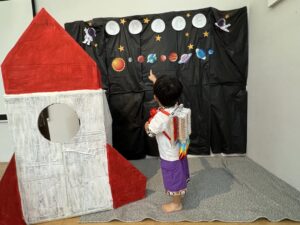4 Beautiful Locations Islandwide
The reflection on childhood memories of climbing trees, building cubby houses, and making mud pies highlights how risky play has always been an integral part of growing up. These activities weren’t just fun; they were crucial learning experiences where children made decisions, took risks, and learned from their mistakes.
Risky play is a vital part of childhood development, offering children the opportunity to explore their limits, make decisions, and experience the consequences in a controlled way. The essence of risky play lies in providing challenges that stretch a child’s capabilities just enough to encourage growth without exposing them to significant danger.
This kind of play allows children to develop resilience, problem-solving skills, and confidence. It helps them understand their own boundaries, how to navigate risks, and how to push themselves in a safe and healthy manner. Through risky play, children also learn about the world around them—how to interact with their environment, how to collaborate with others, and how to cope with uncertainty.
Marilyn Ow, Principal at House on the Hill said, “Encouraging children to take risks in a safe environment is key to building confidence and self-belief. At House on the Hill, the focus is on creating a stimulating learning environment that immerses children in care, fun, and openness. This approach ensures that while children are exposed to risks, these risks are carefully managed to be as safe as possible”.
“For example, when children navigate an obstacle trail under adequate supervision, they are not only learning to balance but also developing essential life skills. Strong balance is foundational for many activities that children will enjoy as they grow, like riding a bike or even learning to surf or ski”, Marilyn said.
“Most children have an innate sense of their own risk tolerance, knowing when they’ve reached their limit. It’s the role of educators and caregivers to support and guide them, helping them learn from their mistakes and become bold, confident individuals. These experiences in taking risks and making decisions contribute to the development of well-rounded, resilient, and self-assured adults”. Marilyn said.
10 Risky Play Activities
Below are 10 risky play activities ideas so children can explore, develop skills, and push their boundaries in a safe yet adventurous way. Each of these activities taps into children’s natural instincts for exploration, problem-solving, and creativity, while also helping them develop physical and social skills.
- Trees:
Climbing trees provides children with a chance to engage with nature while building strength, coordination, and confidence. The challenge of navigating branches at different heights encourages problem-solving and risk assessment.
- Buildings
Exploring tall buildings or balconies introduces children to the concept of height risk. Looking down from a height or ascending large staircases can be thrilling and helps children understand their spatial environment.
- Logs
Climbing over fallen logs is a great introductory activity before tackling tree climbing. Logs help children develop balance, coordination, and agility, all while engaging with natural materials.
- Climbing Frames
Climbing frames are a staple in playgrounds, offering varying levels of difficulty to cater to different age groups. These structures help children develop basic climbing skills, strength, and confidence.
- Rope Swing
Rope swings provide a mix of speed and height, allowing children to experience the thrill of being slightly out of control. This activity is great for building upper body strength and coordination.
- Slides
Slides offer a controlled way for children to experience speed. The excitement of not knowing exactly how they will land promotes creativity and decision-making.
- Bikes
Riding their bike fast introduces children to the thrill of speed and the risk of falling. It’s excellent for building leg strength, coordination, and the ability to navigate obstacles.
- Hide and Seek
This classic game taps into the excitement of temporary isolation and the thrill of finding or being found. It encourages independence, spatial awareness, and social interaction.
- Rough and Tumble
Rough and tumble play, such as chase and play fighting, allows children to explore physical boundaries in a safe and controlled environment. It’s crucial for developing social skills, understanding physical limits, and building resilience.
- Woodworking Activity
Woodworking activities allow children to work with their hands, learn about different materials, and create something tangible. Whether it’s hammering nails, sanding surfaces, or using a saw, woodworking activities help children develop fine motor skills, spatial awareness, and problem-solving abilities
These activities not only support physical development but also help children learn how to assess risks, make decisions, and build confidence in their abilities.
TIPS
Below are our tips to help parents encourage risky play with their child:
- Allow your child to learn to ride a scooter or bike on a road, sand or grass.
- Allow them to explore at the park within your sight, allowing safe boundaries to take risks, and find their threshold and their tolerance.
- Let young children crawl around on different textures such as mud, sand and water to encourage physical development.
- Let them smell and taste a variety of textures and foods.
Risky play is about balancing freedom with safety, allowing children the space to explore and grow while ensuring they are protected from serious harm. It’s a crucial aspect of learning that equips children with the skills and confidence they need to navigate life’s challenges.








